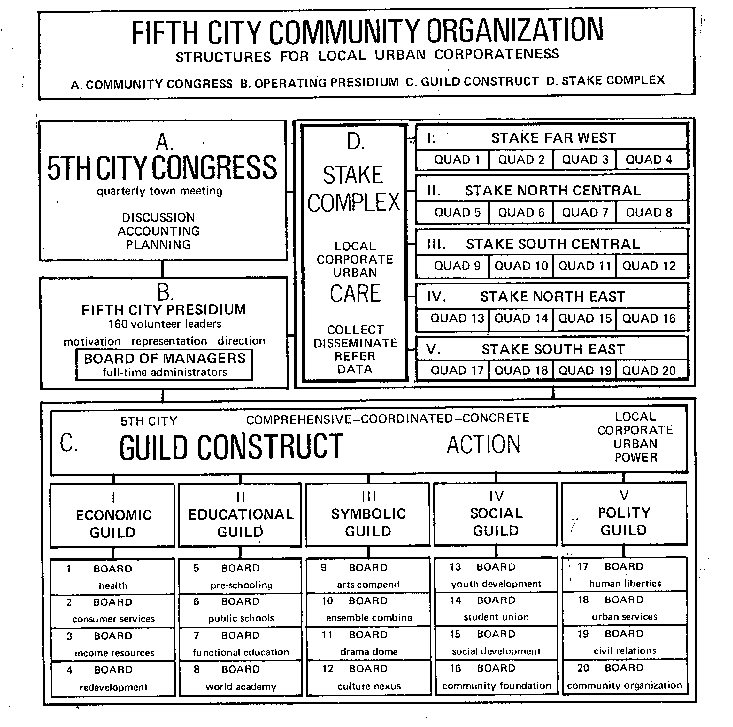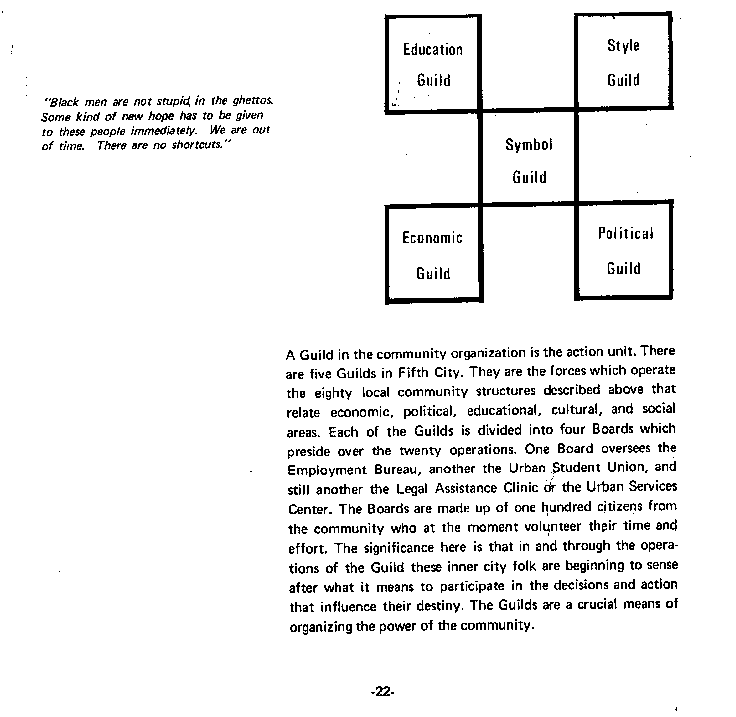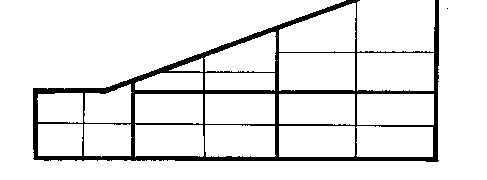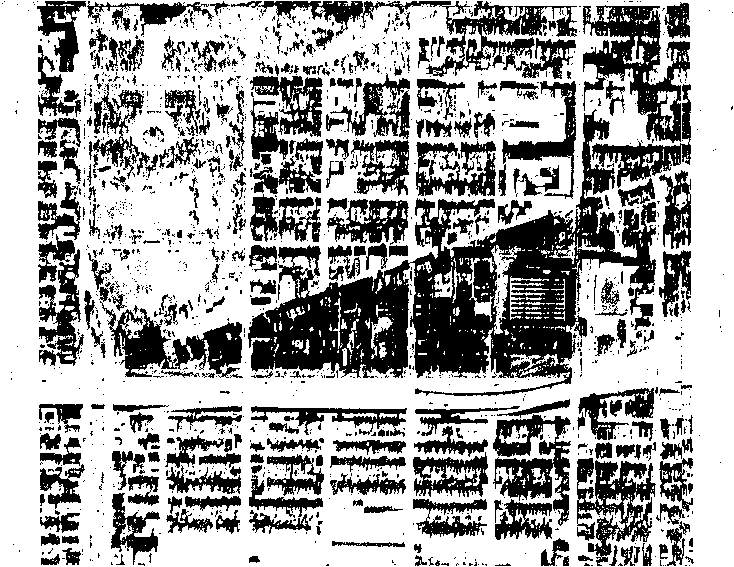
 |
3. Community organization Community organization is basically the instrument which insures the operation,, of the twenty social constructs. It is thereby the decision making means of the community. It is creative thrust in the inner city impacting the total social vehicle. It is the force of social change operating from within the patterns of society. It is black power flowing into and through the local processes toward radical alteration of the situation. This form of community organization in intent involves the total community. In the comprehensive model of Fifth City the organization itself is comprised of a Congress, a Council or Presidium, a Stake complex, and a construct of Guilds. Rational, effective community organization must embrace both the concern that penetrates to the last problems and needs of the individual citizen and the action that issues from the unity of the total citizenry. The Stake complex is the penetration instrument. The community is broken down into five Stakes each of which is divided into four quads. The quads are then further broken down into units consisting of four, five to ten families. The whole community has 160 such units. Some two hundred specially trained volunteer citizens assume responsibility for these community units. These "Iron Men," as they are termed, disseminate crucial information to the units and collect data relative to social and individual needs which are-by means of a simple computer system-made available to the Guilds of the community for proper action.21
 |
"Somebody has got to care on the very local level. . . ,' so that no human being is lost in this horrifying shuffle. Representatives of the Stakes meet biweekly to pool and coordinate their efforts. On alternate weeks the Guilds and Boards gather to receive reports and plan required action. The Fifth City Congress is the third dimension of the community organization. It meets quarterly to hold the Guilds and Stakes accountable for accomplishments and makes the decisions and plans that become the guidelines for the ensuing quarter. The Congress is open to all the citizens like a New ,England town meeting and up to the present has been comprised of approximately 10 per cent of the total community. Representing the Congress when it is not in session is the Executive Council or Presidium composed of the chairmen of the twenty Boards. The Presidium is fundamentally responsible for overseeing the administration and execution of the program outlined by the Congress, and carried out by the Stakes and Guilds. 23
 |
 |
|
|
POSTSCRIPT Comprehensive community reformulation is in our opinion the only strategy for dealing with the tragedy of our inner cities. There are no short cuts. Fragmental approaches will not do. To make this a political game is disaster itself. If we are concerned with human resources, if we want human community in the inner city, if we wish to avoid the blood violence sure to come, there is no other way. The details of the strategic model may differ from the one here rayed out but the comprehensive job must be done. Furthermore, this approach is not a temporary expedient. It is building the new form of corporateness which the urban world of today requires. Long before the year 2000, before we have wasted our funds and energies in patch up efforts, this task of rebuilding total community in the super-cities of our world must be done. IMAGE Journal of the Ecumenical Institute 3444 West Congress Parkway Chicago, Illinois 60624 RETURN REQUESTEDNONFROFIT OIC. U.S. FOSTACE P A I D CHICAGO, 111. FEFMIT No. 7514